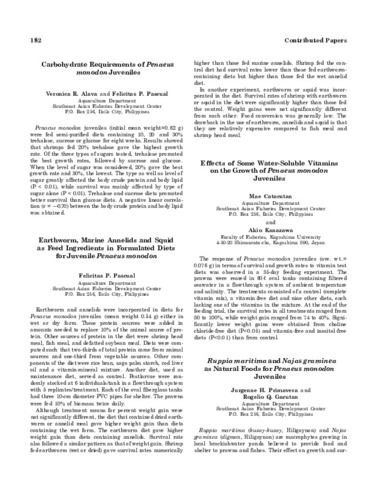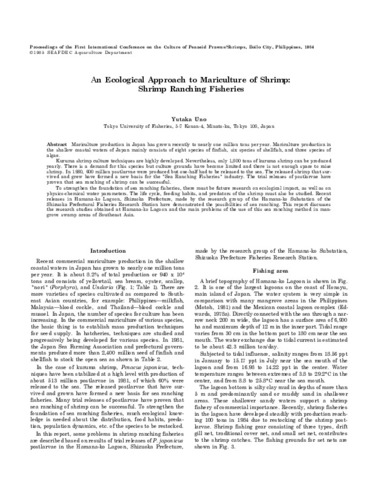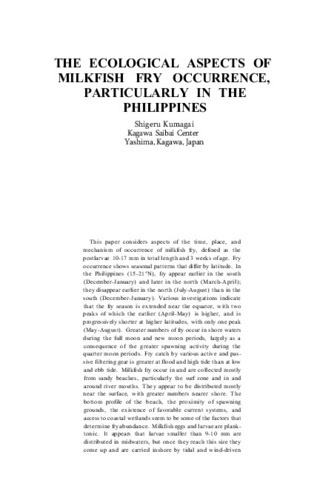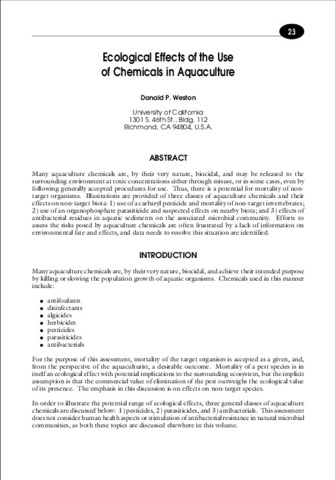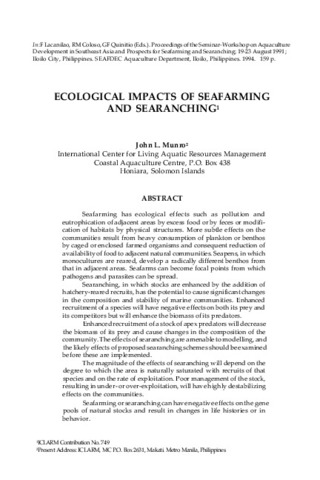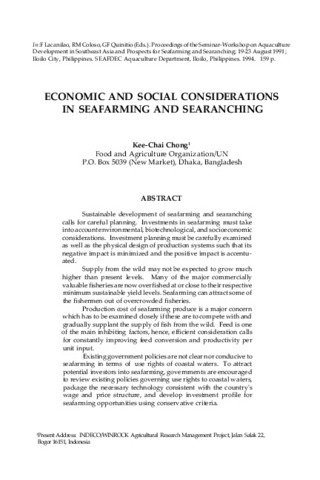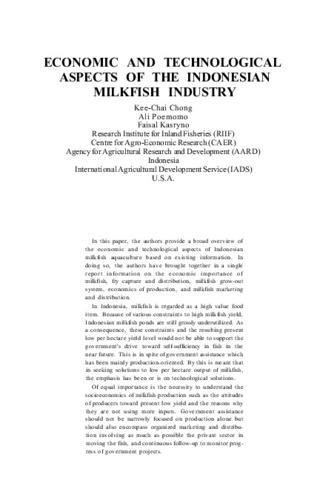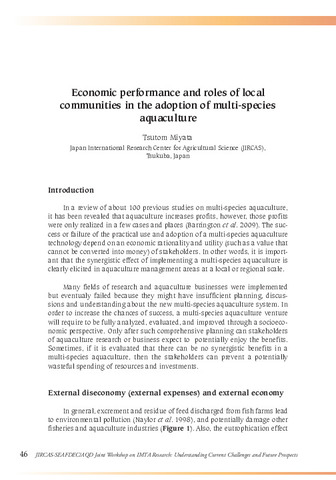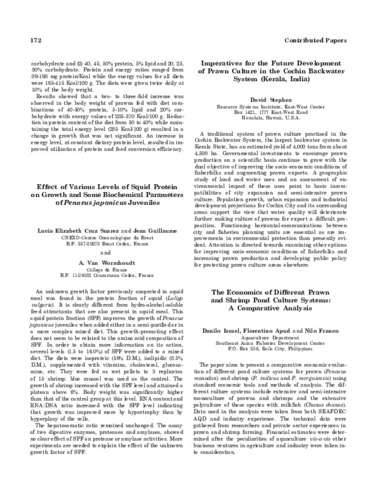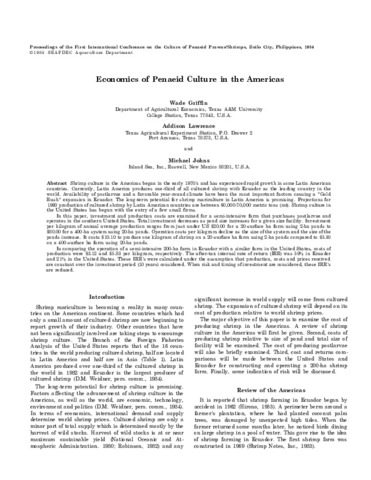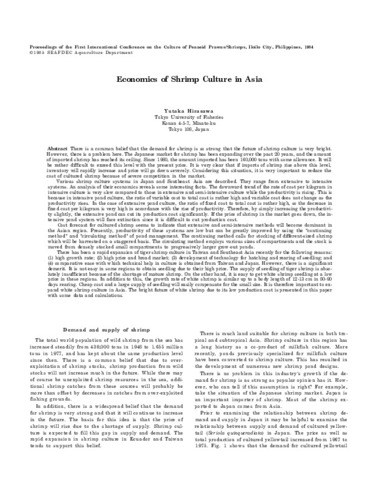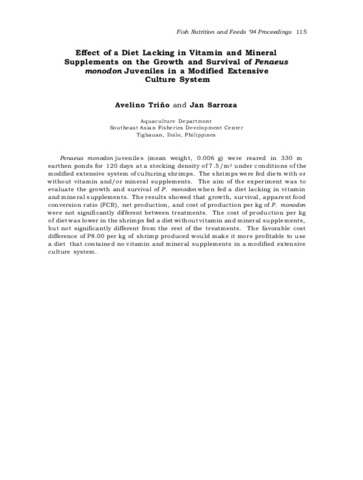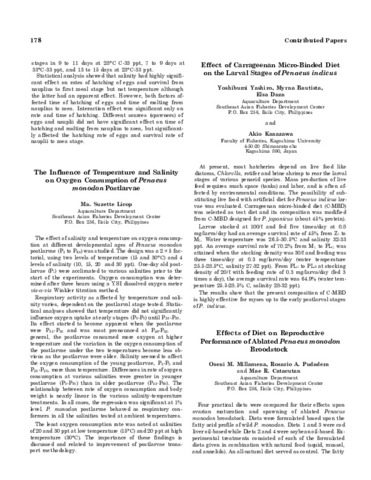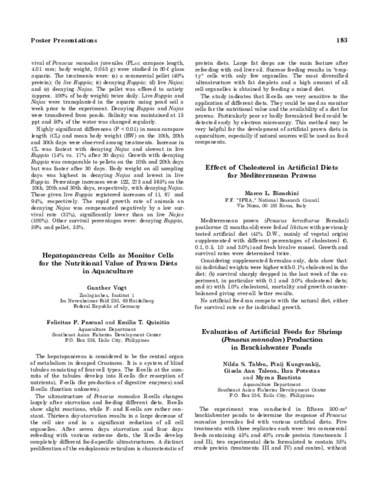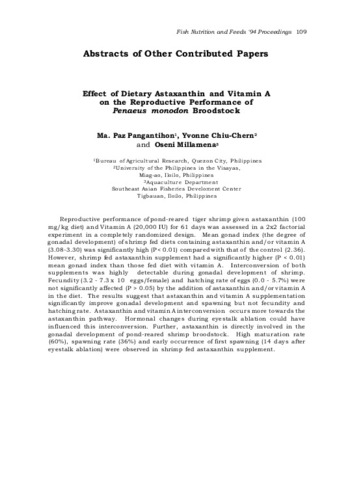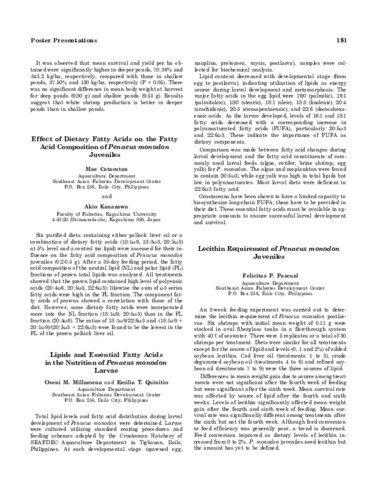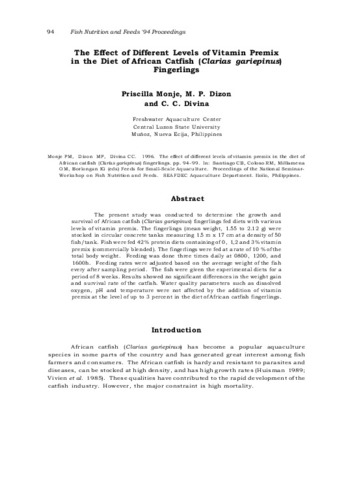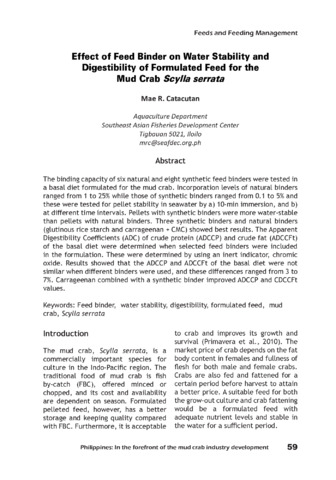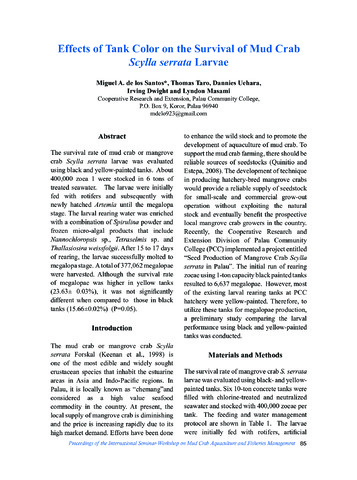Browsing Conference Proceedings by Title
Now showing items 182-201 of 767
-
Earthworm, marine annelids and squid as feed ingredients in formulated diets for juvenile Penaeus monodon
(Aquaculture Department, Southeast Asian Fisheries Development Center, 1985)Earthworm and annelids were incorporated in diets for Penaeus monodon juveniles (mean weight 0.54 g) either in wet or dry form. These protein sources were added in amounts needed to replace 10% of the animal source of ... -
An ecological approach to mariculture of shrimp: Shrimp ranching fisheries
(Aquaculture Department, Southeast Asian Fisheries Development Center, 1985)Mariculture production in Japan has grown recently to nearly one million tons per year. Mariculture production in the shallow coastal waters of Japan mainly consists of eight species of finfish, six species of shellfish, ... -
The ecological aspects of milkfish fry occurrence, particularly in the Philippines
(Aquaculture Department, Southeast Asian Fisheries Development Center; International Development Research Centre; Island Publishing House, Inc., 1984)Aspects of the time, place, and mechanism of occurrence of milkfish (Chanos chanos ) fry, defined as the postlarvae 10-17 mm in total length and 3 weeks of age are considered. Fry occurrence shows seasonal patterns that ... -
An ecological assessment of seven major lakes in the Philippines
(Aquaculture Department, Southeast Asian Fisheries Development Center; Philippine Council for Aquatic and Marine Research and Development (PCAMRD), Department of Science and Technology; Bureau of Fisheries and Aquatic Resources, 2001)An ecological assessment was done on the seven major lakes in the Philippines, namely; Laguna de Bay, Taal, Naujan, Lanao, Mainit, Buluan, and Bato. The assessment was based largely on secondary data and some primary data. ... -
Ecological effects of the use of chemicals in aquaculture
(Aquaculture Department, Southeast Asian Fisheries Development Center, 2000)Many aquaculture chemicals are, by their very nature, biocidal, and may be released to the surrounding environment at toxic concentrations either through misuse, or in some cases, even by following generally accepted ... -
Ecological impacts of seafarming and searanching
(Aquaculture Department, Southeast Asian Fisheries Development Center, 1994)Seafarming has ecological effects such as pollution and eutrophication of adjacent areas by excess food or by feces or modification of habitats by physical structures. More subtle effects on the communities result from ... -
Economic and social considerations in seafarming and searanching
(Aquaculture Department, Southeast Asian Fisheries Development Center, 1994)Sustainable development of seafarming and searanching calls for careful planning. Investments in seafarming must take into account environmental, biotechnological, and socioeconomic considerations. Investment planning must ... -
Economic and technological aspects of the Indonesian milkfish industry
(Aquaculture Department, Southeast Asian Fisheries Development Center; International Development Research Centre; Island Publishing House, Inc., 1984)A broad overview is presented of the economic and technological aspects of Indonesian milkfish (Chanos chanos ) aquaculture covering information on the economic importance of milkfish, fry capture and distribution, milkfish ... -
Economic performance and roles of local communities in the adoption of multi-species aquaculture
(Aquaculture Department, Southeast Asian Fisheries Development Center; Japan International Research Center for Agricultural Sciences, 2022-07) -
The economics of different prawn and shrimp pond culture systems: A comparative analysis
(Aquaculture Department, Southeast Asian Fisheries Development Center, 1985)The paper aims to present a comparative economic evaluation of different pond culture systems for prawn (Penaeus monodon) and shrimp (P. indicus and P. merguiensis) using standard economic tools and methods of analysis. ... -
Economics of penaeid culture in the Americas
(Aquaculture Department, Southeast Asian Fisheries Development Center, 1985)Shrimp culture in the Americas began in the early 1970's and has experienced rapid growth in some Latin American countries. Currently, Latin America produces one-third of all cultured shrimp with Ecuador as the leading ... -
Economics of shrimp culture in Asia
(Aquaculture Department, Southeast Asian Fisheries Development Center, 1985)There is a common belief that the demand for shrimp is so strong that the future of shrimp culture is very bright. However, there is a problem here. The Japanese market for shrimp has been expanding over the past 20 years, ... -
Effect of a diet lacking in vitamin and mineral supplements on the growth and survival of Penaeus monodon juveniles in a modified extensive culture system
(Aquaculture Department, Southeast Asian Fisheries Development Center, 1996)Penaeus monodon juveniles (mean weight, 0.006 g) were reared in 330 m earthen ponds for 120 days at a stocking density of 7.5/m2 under conditions of the modified extensive system of culturing shrimps. The shrimps were fed ... -
Effect of carrageenan micro-binded diet on the larval stages of Penaeus indicus
(Aquaculture Department, Southeast Asian Fisheries Development Center, 1985)At present, most hatcheries depend on live food like diatoms, Chlorella, rotifer and brine shrimp to rear the larval stages of various penaeid species. Mass production of live feed requires much space (tanks) and labor, ... -
Effect of cholesterol in artificial diets for Mediterranean prawns
(Aquaculture Department, Southeast Asian Fisheries Development Center, 1985)Mediterranean prawn (Penaeus kerathurus Forsskal) postlarvae (2 months old) were fed ad libitum with previously tested artificial diet (41% D.W., mainly of vegetal origin) supplemented with different percentages of cholesterol ... -
Effect of dietary astaxanthin and vitamin A on the reproductive performance of Penaeus monodon broodstock
(Aquaculture Department, Southeast Asian Fisheries Development Center, 1996)Reproductive performance of pond-reared tiger shrimp given astaxanthin (100 mg/kg diet) and Vitamin A (20,000 IU) for 61 days was assessed in a 2x2 factorial experiment in a completely randomized design. Mean gonad index ... -
Effect of dietary fatty acids on the fatty acid composition of Penaeus monodon juveniles
(Aquaculture Department, Southeast Asian Fisheries Development Center, 1985)Six purified diets containing either pollack liver oil or a combination of dietary fatty acids (18:1ω9, 18:3ω3, 20:5ω3) at 5% level and a control (no lipid) were assessed for their influence on the fatty acid composition ... -
The effect of different levels of vitamins premix in the diet of African catfish (Clarias gariepinus) fingerlings
(Aquaculture Department, Southeast Asian Fisheries Development Center, 1996)The present study was conducted to determine the growth and survival of African catfish (Clarias gariepinus) fingerlings fed diets with various levels of vitamin premix. The fingerlings (mean weight, 1.55 to 2.12 g) were ... -
Effect of feed binder on water stability and digestibility of formulated feed for the mud crab Scylla serrata
(Aquaculture Department, Southeast Asian Fisheries Development Center, 2017)The binding capacity of six natural and eight synthetic feed binders were tested in a basal diet formulated for the mud crab. Incorporation levels of natural binders ranged from 1 to 25% while those of synthetic binders ... -
Effect of tank color on the survival of mud crab Scylla serrata larvae
(Rajiv Gandhi Centre for Aquaculture (MPEDA), 2015)The survival rate of mud crab or mangrove crab Scylla serrata larvae was evaluated using black and yellow-painted tanks. About 400,000 zoea 1 were stocked in 6 tons of treated seawater. The larvae were initially fed with ...

